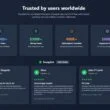|
Getting your Trinity Audio player ready...
|
Financial crises can push people into desperate situations, and in these moments, access to money becomes a lifeline. Unfortunately, for those without access to traditional credit options, the alternative can sometimes lead to an illegal and dangerous practice known as loan sharking, or “Shy Business.” Tied historically to organized crime, Shy Business operates outside the constraints of legal financial systems, with lenders offering high-risk loans at outrageously high interest rates. Borrowers, already struggling financially, can find themselves trapped in a web of insurmountable debt, often enforced through intimidation or violence.
The term “Shy Business” has a deep connection to the criminal underworld, particularly in its association with the Mafia, which used loan sharking as a major source of income during the mid-20th century. While loan sharking is illegal in most countries today, the practice persists, often in a more concealed form, continuing to exploit vulnerable individuals in financial need.
What is Shy Business?
The term “Shy Business” or “shylock business” has its origins in literature, particularly in Shakespeare’s The Merchant of Venice. The character Shylock is a moneylender who demands a pound of flesh as collateral for a loan, symbolizing the harsh and unforgiving nature of loan sharking. In modern usage, shylock refers to anyone who lends money at excessive interest rates, often through illegal channels.
Loan sharks thrive in environments where borrowers lack access to formal financial institutions, making them prime targets for exploitation. These lenders often charge interest rates so high that the borrower has little chance of repaying the principal, much less the accruing interest. In many cases, borrowers are forced to take out additional loans to cover the interest, trapping them in a perpetual cycle of debt. The key distinguishing feature of Shy Business is its illegal nature, operating outside government regulations and legal interest rate limits, making it a predatory practice.
The Mechanics of Loan Sharking
At its core, Shy Business revolves around predatory lending, where the loan terms are structured in a way that is highly unfavorable to the borrower. Loan sharks offer seemingly easy and quick cash but do so with exorbitant interest rates—often referred to as “juice” or “vig.” These terms are designed to make it nearly impossible for the borrower to repay the loan in full, leading to compounded interest that balloons the debt over time.
The enforcement of these loans is typically far from legal. Borrowers who fall behind on payments may face harassment, threats, and physical violence. Unlike traditional lenders, loan sharks don’t rely on credit scores or formal contracts to ensure repayment. Instead, they use intimidation and sometimes even family threats as collateral to enforce their terms. It is not uncommon for loan sharks to have connections to organized crime, further ensuring that borrowers are pressured into meeting repayment demands.
Historical Examples of Shy Business
- The Mafia’s Loan Sharking Empire
In the mid-20th century, loan sharking became one of the Mafia’s most lucrative businesses. Mob families like the Gambinos and the Genovese controlled vast networks of loan sharks in cities like New York, using it to establish power over individuals and entire communities. Loan sharking offered the mob a steady income stream and a way to keep people indebted, giving them leverage in other illegal operations. High-profile figures, such as Michael Franzese, a former caporegime of the Colombo crime family, have spoken openly about the centrality of loan sharking to the Mafia’s operations, with some loans reportedly carrying interest rates as high as 1,000% annually.The Mafia often targeted small business owners and workers who couldn’t secure traditional loans, offering them cash to keep their businesses afloat or to cover unexpected costs. However, if these borrowers defaulted, they faced brutal repercussions, including threats, violence, and even death. In some cases, Mafia loan sharks extended loans to individuals with no hope of repaying them, simply to gain control over their businesses or properties. - The Teamsters and Jimmy Hoffa
The Teamsters Union, under the leadership of Jimmy Hoffa, became infamous not only for its labor strikes but also for its alleged ties to organized crime. During Hoffa’s reign, the Teamsters’ pension fund was rumored to have been used as a source of capital for Mafia-backed loan sharks. These loans were distributed to high-risk borrowers who had no other means of securing funds, and the mob profited significantly from the exorbitant interest rates. Hoffa himself was eventually convicted on charges of fraud and bribery, although his involvement with loan sharking continued to be a topic of investigation and speculation.This intersection of organized labor, financial malpractice, and loan sharking created a shadowy financial ecosystem where individuals, businesses, and even public institutions became entangled with organized crime. - The Decline and Resurgence of Loan Sharking
In the late 20th century, increased legal pressure and the passage of laws such as the Racketeer Influenced and Corrupt Organizations (RICO) Act helped dismantle many of the Mafia’s loan-sharking operations. High-profile prosecutions of Mafia bosses and their associates dealt a significant blow to the loan-sharking industry, and law enforcement agencies made it a priority to crack down on illegal lending practices.However, despite these efforts, loan sharking persists in various forms today. In recent years, authorities have uncovered new loan-sharking rings operating in low-income communities and immigrant neighborhoods, where access to traditional banking is limited. These operations may be less violent than their mid-century predecessors, but they are no less predatory, often using hidden fees, penalties, and steep interest rates to trap borrowers in a cycle of debt.
Modern-Day Loan Sharking
Today, loan sharking has adapted to more discreet forms, often masquerading as payday loans or other types of predatory lending. These modern-day loan sharks operate in the shadows of the financial world, targeting individuals who have few options but to accept high-interest loans in times of need. Payday lenders, for instance, may not use physical intimidation, but their astronomical interest rates can lead borrowers into financial ruin. While many payday loan companies are legal, they often operate in a gray area, offering loans that, while technically permissible, are designed to exploit borrowers.
The rise of online lending platforms has also created new avenues for loan sharks to operate. With the anonymity of the internet, unscrupulous lenders can target borrowers from across the globe, offering quick cash with hidden fees and untenable repayment terms.
Preventing and Combating Loan Sharking
Law enforcement agencies around the world have made significant strides in combating loan sharking, but it remains a difficult problem to eradicate entirely. The clandestine nature of the practice, combined with the often desperate situations of borrowers, makes it hard for authorities to identify and prosecute loan sharks.
Governments have responded by tightening regulations on lending practices, requiring all lenders to be registered and subject to interest rate caps. For example, in the United States, the Truth in Lending Act ensures that consumers are informed of the true cost of their loans, while the Consumer Financial Protection Bureau regulates payday lenders to prevent the most egregious abuses. However, illegal lending continues to flourish, especially in low-income and marginalized communities where access to traditional credit is limited.
Famous Cases of Loan Sharking
- Michael Franzese, Colombo Crime Family
Michael Franzese, once a powerful figure in the Colombo crime family, has spoken at length about the mafia’s reliance on loan sharking. He recounts how loan sharks under his command would make loans to desperate individuals and then use a combination of threats and violence to ensure repayment. Franzese himself earned millions from this practice before leaving the Mafia and becoming an advocate against organized crime. - The Prosecution of Paul Castellano
Paul Castellano, head of the Gambino crime family, was heavily involved in loan sharking operations. His empire of loan sharks extended across New York, lending money to small business owners, laborers, and even professionals. Castellano’s arrest and eventual assassination marked a turning point in the government’s fight against Mafia-run loan sharking.
How to Recognize and Protect Yourself from Loan Sharks
Recognizing the signs of a loan shark is crucial to avoiding the devastating financial consequences of illegal lending. Some key warning signs include:
- No formal contracts: Loan sharks rarely provide written agreements, making it difficult for borrowers to challenge the terms of the loan.
- Exorbitant interest rates: While high-interest loans are not uncommon, loan sharks often charge rates far beyond legal limits, with some loans doubling or tripling the initial amount owed.
- Threats or intimidation: If a lender resorts to threats or physical intimidation, it is a clear indication of illegal activity.
- Cash-only transactions: Many loan sharks deal only in cash to avoid leaving a paper trail, further complicating the process of law enforcement intervention.
Loan sharking may have lost some of its grip on society over the years, but it continues to exist in various forms, serving as a reminder of the dangers posed by unregulated and illegal lending practices. As financial systems evolve, so do the methods of exploitation, making it all the more important for individuals to stay informed and protected.
References
Glossary of Mafia-Related Words – Wikipedia.








